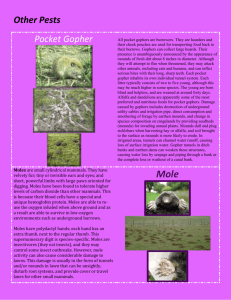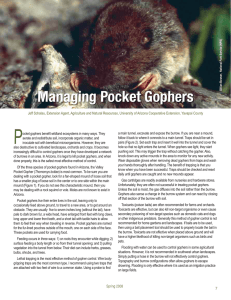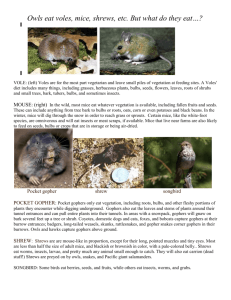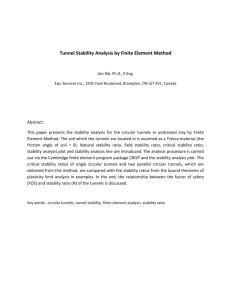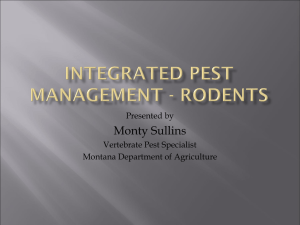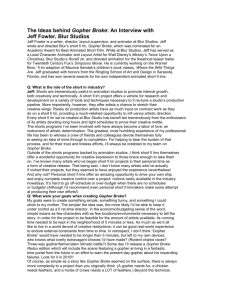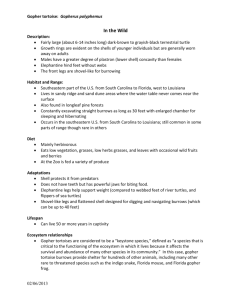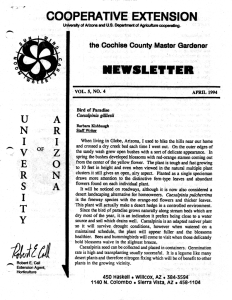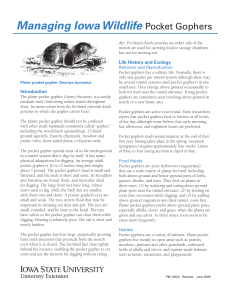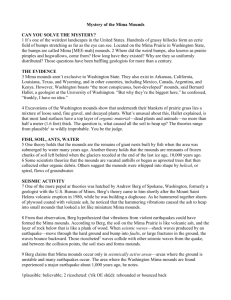12.02.09_Pocket Gopher - Texas Master Naturalist
advertisement
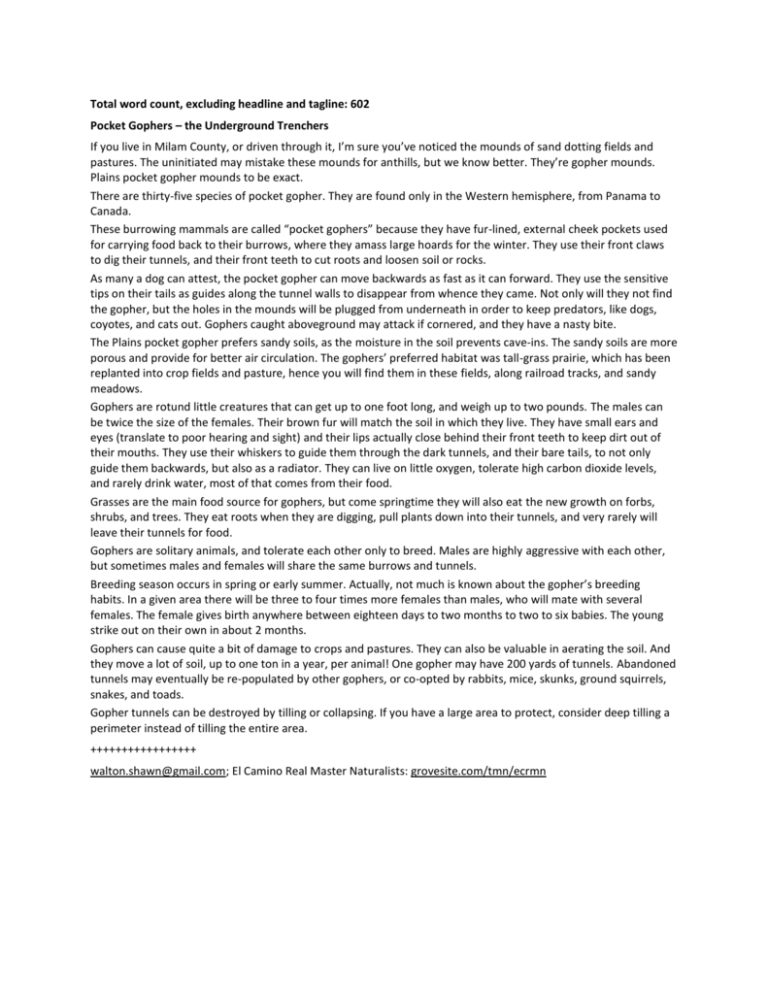
Total word count, excluding headline and tagline: 602 Pocket Gophers – the Underground Trenchers If you live in Milam County, or driven through it, I’m sure you’ve noticed the mounds of sand dotting fields and pastures. The uninitiated may mistake these mounds for anthills, but we know better. They’re gopher mounds. Plains pocket gopher mounds to be exact. There are thirty-five species of pocket gopher. They are found only in the Western hemisphere, from Panama to Canada. These burrowing mammals are called “pocket gophers” because they have fur-lined, external cheek pockets used for carrying food back to their burrows, where they amass large hoards for the winter. They use their front claws to dig their tunnels, and their front teeth to cut roots and loosen soil or rocks. As many a dog can attest, the pocket gopher can move backwards as fast as it can forward. They use the sensitive tips on their tails as guides along the tunnel walls to disappear from whence they came. Not only will they not find the gopher, but the holes in the mounds will be plugged from underneath in order to keep predators, like dogs, coyotes, and cats out. Gophers caught aboveground may attack if cornered, and they have a nasty bite. The Plains pocket gopher prefers sandy soils, as the moisture in the soil prevents cave-ins. The sandy soils are more porous and provide for better air circulation. The gophers’ preferred habitat was tall-grass prairie, which has been replanted into crop fields and pasture, hence you will find them in these fields, along railroad tracks, and sandy meadows. Gophers are rotund little creatures that can get up to one foot long, and weigh up to two pounds. The males can be twice the size of the females. Their brown fur will match the soil in which they live. They have small ears and eyes (translate to poor hearing and sight) and their lips actually close behind their front teeth to keep dirt out of their mouths. They use their whiskers to guide them through the dark tunnels, and their bare tails, to not only guide them backwards, but also as a radiator. They can live on little oxygen, tolerate high carbon dioxide levels, and rarely drink water, most of that comes from their food. Grasses are the main food source for gophers, but come springtime they will also eat the new growth on forbs, shrubs, and trees. They eat roots when they are digging, pull plants down into their tunnels, and very rarely will leave their tunnels for food. Gophers are solitary animals, and tolerate each other only to breed. Males are highly aggressive with each other, but sometimes males and females will share the same burrows and tunnels. Breeding season occurs in spring or early summer. Actually, not much is known about the gopher’s breeding habits. In a given area there will be three to four times more females than males, who will mate with several females. The female gives birth anywhere between eighteen days to two months to two to six babies. The young strike out on their own in about 2 months. Gophers can cause quite a bit of damage to crops and pastures. They can also be valuable in aerating the soil. And they move a lot of soil, up to one ton in a year, per animal! One gopher may have 200 yards of tunnels. Abandoned tunnels may eventually be re-populated by other gophers, or co-opted by rabbits, mice, skunks, ground squirrels, snakes, and toads. Gopher tunnels can be destroyed by tilling or collapsing. If you have a large area to protect, consider deep tilling a perimeter instead of tilling the entire area. +++++++++++++++++ walton.shawn@gmail.com; El Camino Real Master Naturalists: grovesite.com/tmn/ecrmn
